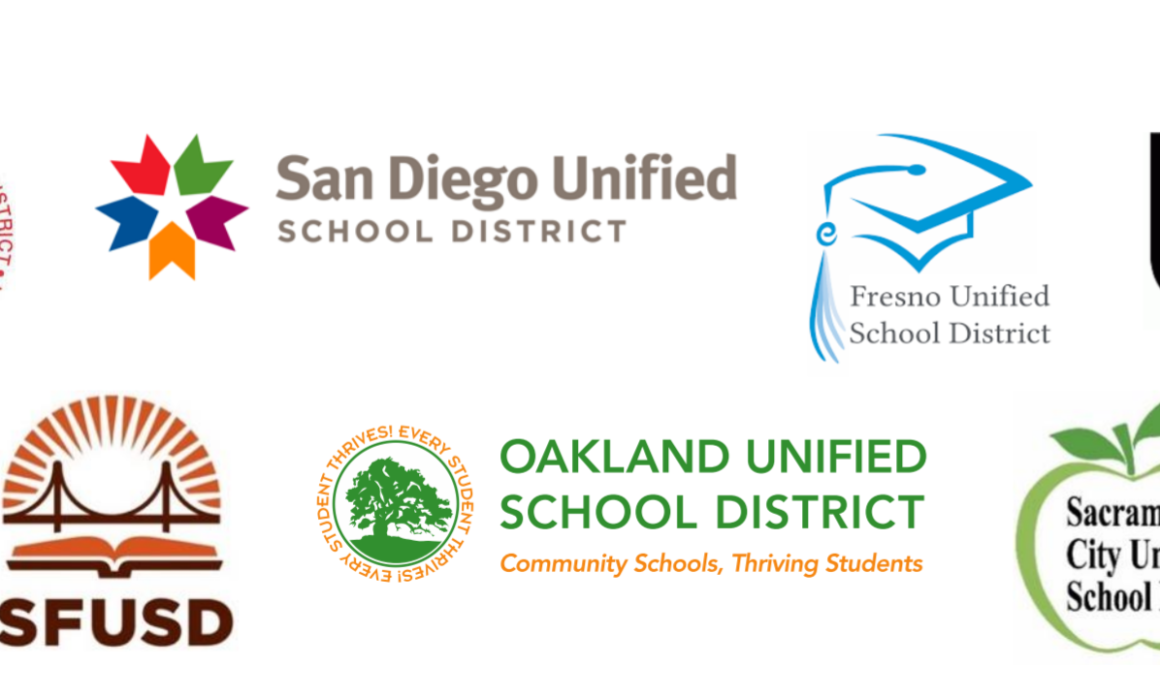
As COVID-19 continues to spread out of control, the leaders of seven of the largest school districts in the state are warning that Gov. Gavin Newsom’s plan to physically reopen schools fails to address the needs of urban school districts that serve nearly a quarter of California students.
In a Jan. 6 letter to Newsom, the superintendents of Los Angeles Unified, San Diego Unified, Fresno Unified, Long Beach Unified, San Francisco Unified, Oakland Unified and Sacramento City Unified school districts warned that the governor’s “Safe Schools for All” plan does not address the disproportionate impact COVID is having on low-income communities of color and reverses a decade-long commitment to equity-based funding.
“It leaves the definition of a ‘safe school environment’ and the ‘standard for reopening classrooms’ up to the individual discretion of 1,037 school districts, creating a patchwork of safety standards in the face of a statewide health crisis,” the superintendents said in the letter.
Released in late December, the governor’s reopening plan sets out guidelines to support school district to work toward “safe in-person instruction by early spring 2021.” The plan is built on four main pillars: funding, safety and mitigation, oversight and assistance, and transparency and accountability. The governor proposes allocating an additional $2 billion for the safe physical reopening of schools beginning in February with a priority for transitional kindergarten through second grade, and then returning other grade levels to in-person learning through spring. This funding will provide about $450 per student to districts offering in-person instruction and will be weighted for districts serving students from low-income families, English learners and foster youth.
The plan calls for frequent COVID-19 testing for all school staff and students, including weekly testing at schools in communities with high rates of transmission. Additionally, all staff and students will be required to wear masks. Schools will continue to be on-boarded onto the School Portal for Outbreak Tracking to improve collaboration between school and health officials, and members of the state contact tracing workforce will be deployed to improve communication with schools, according to the plan.
A state dashboard will provide important COVID-related information enabling all Californians to see their school’s reopening status, data on in-school transmissions and the amount of available funding. The state is also establishing a web-based hotline for staff and community to report concerns to the Safe Schools for All Team, leading to escalating levels of intervention.
“California’s Safe Schools for All Plan provides the support and accountability to establish a clear path to minimize in-school transmissions and enable, first, a phased return to in-person instruction, and then ongoing safe in-person instruction,” the plan states.
CTA President E. Toby Boyd says he appreciates the governor recognizing what CTA, for months, has been advocating for in order to safely return to classrooms: tougher safety standards, rigorous and consistent testing, data collection and transparency. While these items are addressed in the plan, many unanswered questions remain, particularly with implementation. With California the nation’s COVID hotspot and amid a health system crisis, Boyd says CTA continues to support distance learning for schools in the state’s Purple Tier of transmission rates.
“We look forward to hearing more information and hope the new guidelines that the governor said would be released next week will create a coherent statewide plan rather than creating more confusion for parents and school districts,” says Boyd. “We will continue our conversations with lawmakers and the governor. This must be a joint effort to ensure a safe return to our classrooms where we know our students learn best and thrive.”
In their letter to the governor, the seven superintendents said the plan is a “start toward recovery,” calling on the state to acknowledge the following needs and take action to address them:
- An immediate, all-hands-on-deck, public health effort to reduce the spread of the virus in low-income communities.
- A clear state standard for COVID-related health issues in schools, with a requirement for in-classroom instruction to begin when the standard is met.
- Public health funds, not K-12 educational funds from Prop. 98, should be used for COVID testing and vaccinations.
- School-based health services should be integrated with COVID testing and vaccination plans.
- Learning-loss recovery plans, including funding for summer school, need to be established now.
- Reopening plans need to include specific funding for special education students.
- A timetable and plan for vaccinations of school staff should be made public by Feb. 1.
- The state should begin to publish detailed information on school and district status in meeting COVID health standards, providing in-person instruction and school-based virus occurrences by Feb. 1
“We believe these additional steps will ensure that ‘Safe Schools for All’ lives up to its name. Despite heroic efforts by students, teachers and families, it will take a coordinated effort by all in state and local government to reopen classrooms,” the letter states.
According to the letter, school-based COVID tests in December of children in Los Angeles, with no known symptoms or exposure to the virus, showed almost one in three children in the lowest-income communities had the virus compared with about 1 in 25 in more affluent areas—a disproportionate impact that is consistent across the state, the letter reads.
“There is little likelihood the low-income communities we serve will meet the proposed “Safe Schools for All” deadline of Feb. 1 and many experts say even March 1 is unlikely, given current health conditions,” the letter continues. “Public health officials must tackle this challenge head-on or we will be left with more of the same: continued high rates of the virus in low-income communities that make it unsafe to reopen classrooms … If nothing changes, many students in high-need communities are at risk of being left behind.”
The Safe Schools for All Plan is located here.